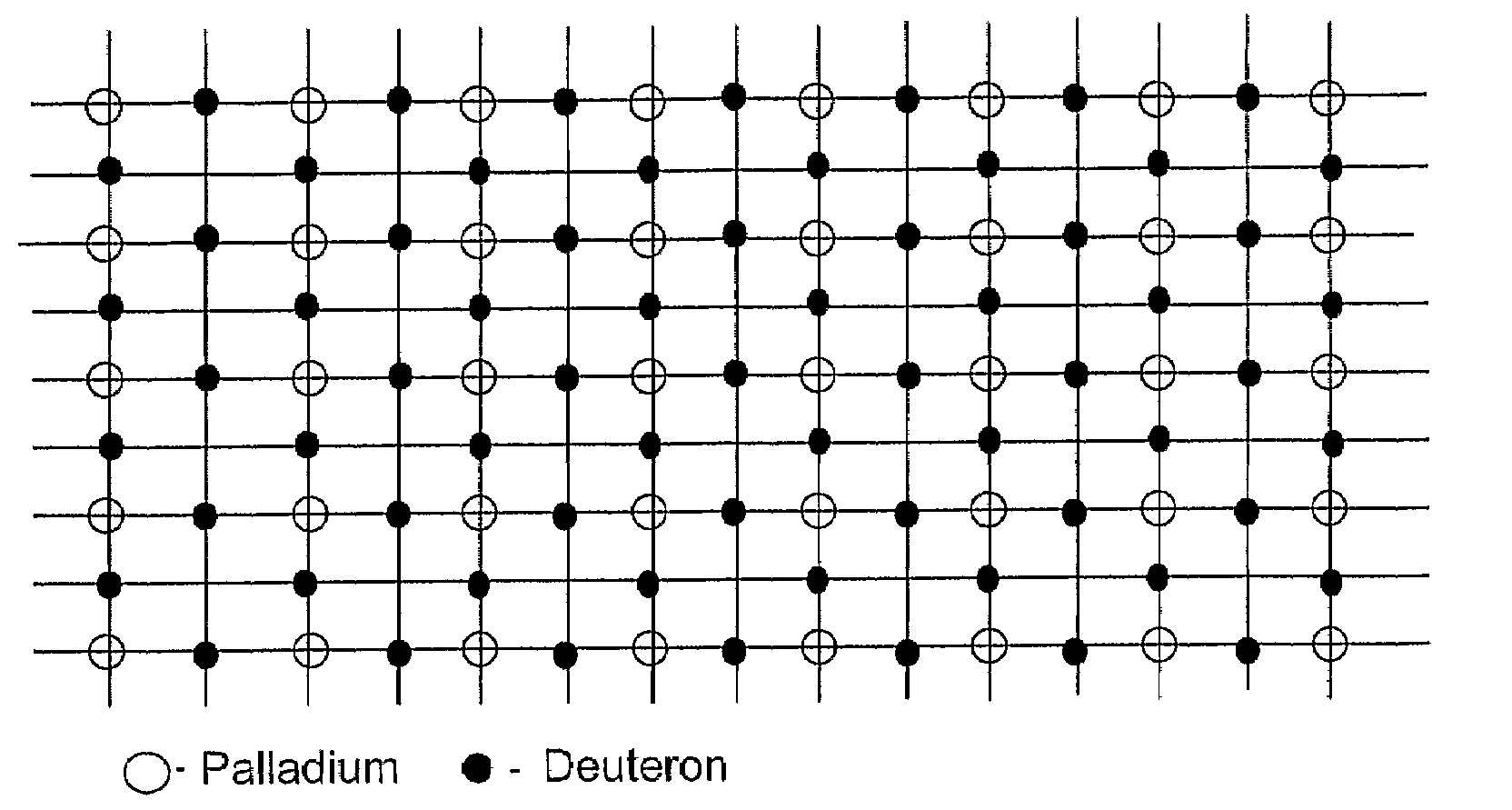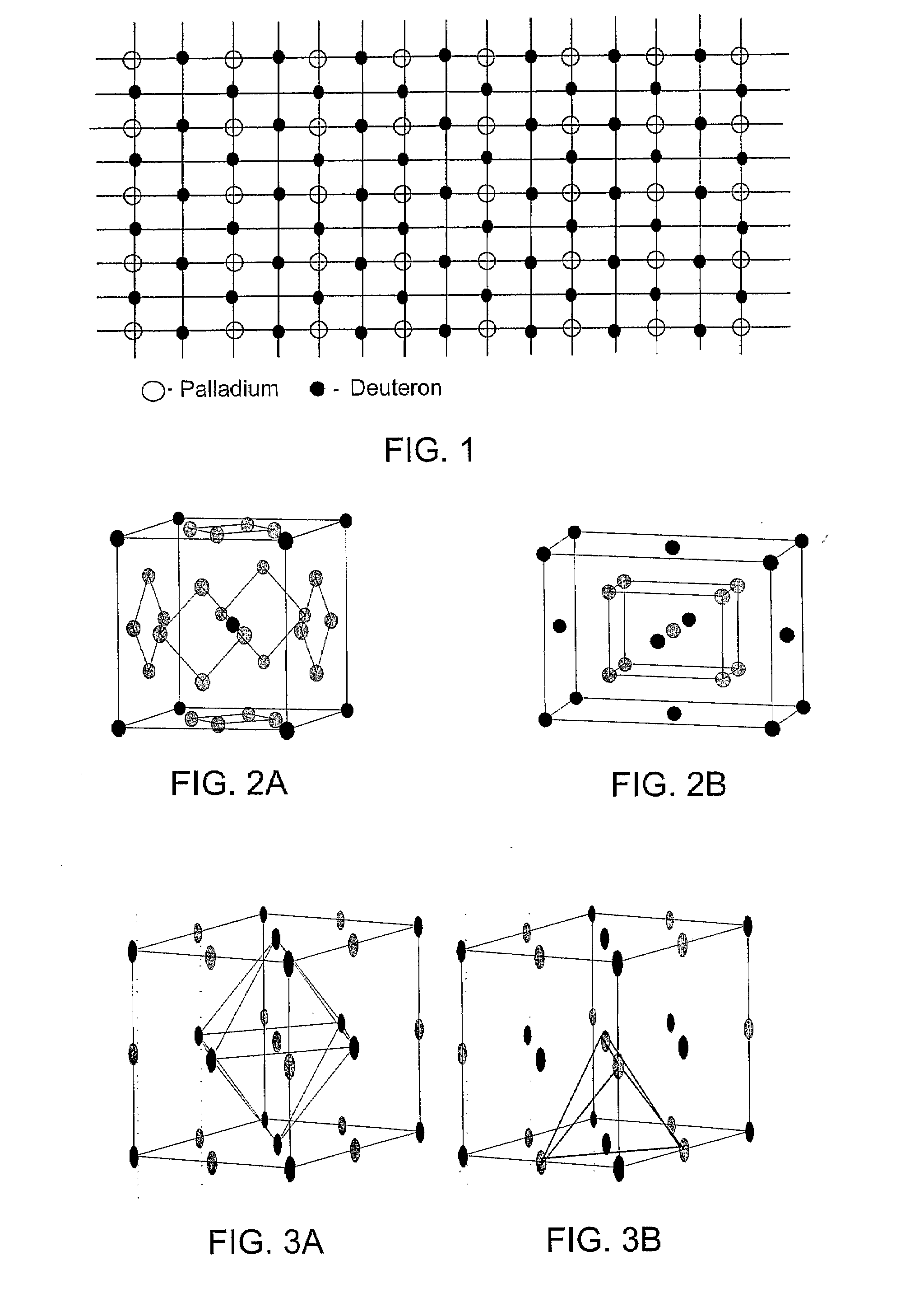Low temperature fusion
a low temperature fusion and fusion technology, applied in nuclear reactors, nuclear engineering, greenhouse gas reduction, etc., can solve the problems of inability to produce enough fusions for practical applications, short mean lifetime of a muon, and existence of low temperature fusion, so as to improve the conditions of fusion and enhance the convergence of deuterons.
- Summary
- Abstract
- Description
- Claims
- Application Information
AI Technical Summary
Problems solved by technology
Method used
Image
Examples
examples
[0061]Specific embodiments of the disclosure will now be further described by the following, nonlimiting examples which will serve to illustrate in some detail various features. The following examples are included to facilitate an understanding of ways in which the disclosure may be practiced. It should be appreciated that the examples which follow represent embodiments discovered to function well in the practice of the disclosure, and thus can be considered to constitute preferred modes for the practice of the disclosure. However, it should be appreciated that many changes can be made in the exemplary embodiments which are disclosed while still obtaining like or similar result without departing from the spirit and scope of the disclosure. Accordingly, the examples should not be construed as limiting the scope of the disclosure.
[0062]As noted above, the process of low temperature fusion of hydrogen nuclei may be caused by:[0063]A. the heavy electron (high effective-mass) nature of t...
PUM
 Login to View More
Login to View More Abstract
Description
Claims
Application Information
 Login to View More
Login to View More - R&D
- Intellectual Property
- Life Sciences
- Materials
- Tech Scout
- Unparalleled Data Quality
- Higher Quality Content
- 60% Fewer Hallucinations
Browse by: Latest US Patents, China's latest patents, Technical Efficacy Thesaurus, Application Domain, Technology Topic, Popular Technical Reports.
© 2025 PatSnap. All rights reserved.Legal|Privacy policy|Modern Slavery Act Transparency Statement|Sitemap|About US| Contact US: help@patsnap.com



